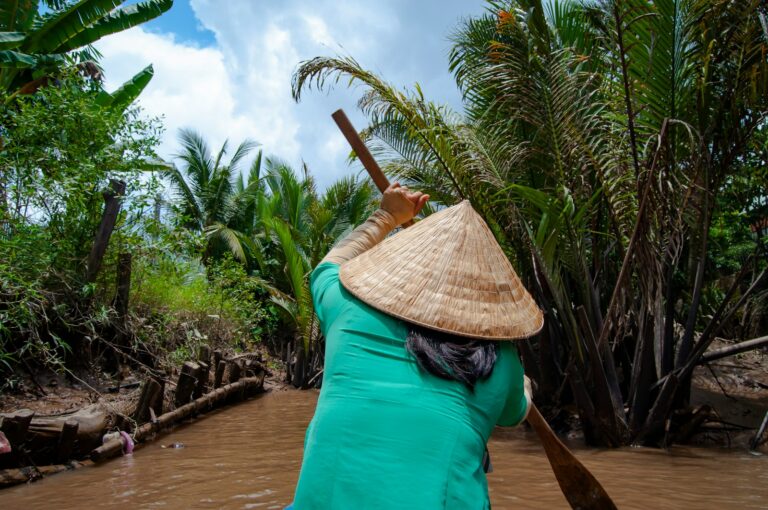Phu Quoc Dogs: Vietnam’s Struggle to Revive a National Treasure
By Ngoc Tran
Edited by Cao Huu Hai
Under the bright lights of Ho Chi Minh City’s International Dog Show in late December, a sleek brown dog named Mickey trotted across the stage with confidence that belied her humble beginnings. When the judges announced the results—first prize for “Phu Quoc Female Dogs” and second for “Phu Quoc Dogs”—her owner, Nguyen Minh Khang, could hardly hide his pride.
“It’s not easy to train a dog,” Khang said later, standing near the edge of the show ring. “And it’s even harder to win awards.”
For Khang, the victories were the culmination of a quiet passion that began more than a decade ago, when a colleague gave him two Phu Quoc dogs. At the time, he knew little about the island breed that carries the name of Vietnam’s largest island, famous for its ridge of hair running along the spine. “I searched Google, joined online forums, read everything I could,” he recalled. That curiosity turned into obsession—and eventually, Mickey.
A Natural Runner
Training Mickey wasn’t straightforward. The early sessions were frustrating. “She wouldn’t obey, always pulling on the leash,” Khang said. But within three sessions, something clicked. Soon she was moving with an elegance that drew attention. “Training alone can’t make a dog perfect for running,” he said. “They need to be naturally gifted.” Fortunately, Mickey had that gift.
Khang credits Mickey’s ability more than his own methods. “Some dogs take months; with her, it was weeks,” he said. Still, the preparation was meticulous. Weekends meant long drives from Ho Chi Minh City to Ba Ria, where relatives cared for his dogs. There, Khang inspected their health, adjusted diets, and personally supervised exercise. “Owners must be close to their dogs,” he said. “They give that love back.”
Phu Quoc dogs, he explained, are easy to care for. They eat rice and fish, shed little, and have almost no odor—traits that make them suitable for homes, even in cities. But they are hunting dogs at heart, bred for endurance and alertness. “They’re very smart, very active,” Khang said. “If you keep them in small spaces, they suffer.”
The Allure of a Rare Breed
Phu Quoc dogs are among the rarest in the world, one of just three ridgeback breeds alongside the Rhodesian and Thai ridgebacks. Revered for their intelligence and loyalty, they once graced the pages of Larousse du Chien, a 19th-century French canine encyclopedia. French colonial officers brought them to Europe, where they became a status symbol among the wealthy.
That prestige didn’t last. Over decades, as Vietnam modernized, the breed was neglected. Crossbreeding diluted its purity. Thailand, meanwhile, capitalized on its own ridgeback, refining and registering it as an international breed. Some Thai breeders even claim Phu Quoc dogs originated from theirs.
“To restore recognition, we need strategy,” said Du Thanh Khiem, a Vietnamese-born Belgian breeder and ardent Phu Quoc advocate. “First, we must rebuild the breed. Then, the Fédération Cynologique Internationale (FCI) must recognize it.” France has agreed, Khiem said. Belgium may follow. If both do, Phu Quoc dogs could enter major international competitions.
Breeding for the Future
Khang is doing his part. Three months ago, Mickey gave birth to 12 puppies. He kept three—two males and a female—to observe their traits. “I want to see how the genetics develop,” he said. Among his current favorites is Red Wolf, a 15-month-old male with a striking orange-red coat. “A wild dog,” Khang calls him, admiringly.
His dream is to create a bloodline that meets international standards. Experts say the ideal Phu Quoc has a narrow waist, strong legs, a long tail, intact teeth and jaws, and a graceful, full stride. But even dogs that tick most boxes can fall short. “The real test is in motion,” Khiem said. “When a dog runs, everything should move in harmony.”
The challenge is bigger than Khang’s backyard. For the FCI to recognize the breed, Vietnam needs 1,000 documented purebreds. Today, breeding remains fragmented, without a unified plan or registry. “It’s still spontaneous,” Khang admitted. “People raise them as a hobby, not a mission.”
An Uphill Battle for Recognition
The International Dog Show’s organizers share Khang’s ambition. “The show introduces Vietnamese breeds to the world,” said Ly Nguyen Khon, head of the organizing committee. “We want the FCI to acknowledge the Phu Quoc ridgeback as Vietnam’s heritage.”
For now, the path to recognition is long—and uncertain. But on that December afternoon, as Mickey basked in applause, Khang felt something close to victory. “I don’t need a training center,” he said, smiling. “These dogs are so smart, they can read my thoughts.”
Origins and Mystery
The Phu Quoc dog’s beginnings are still debated. Two American researchers once claimed the ridgeback trait appeared only in eastern Thailand and Africa, suggesting Phu Quoc dogs descended from Thai ridgebacks 400 years ago. But Vietnamese scholars dismiss this. “Thai fishermen then couldn’t sail 500 kilometers to Phu Quoc,” argued Nguyen Van Bien of Can Tho University.
Whatever its origin, the breed’s future depends on efforts like Khang’s—and on a community determined to prove that Phu Quoc dogs, once a colonial curiosity, deserve a place on the world stage again.



